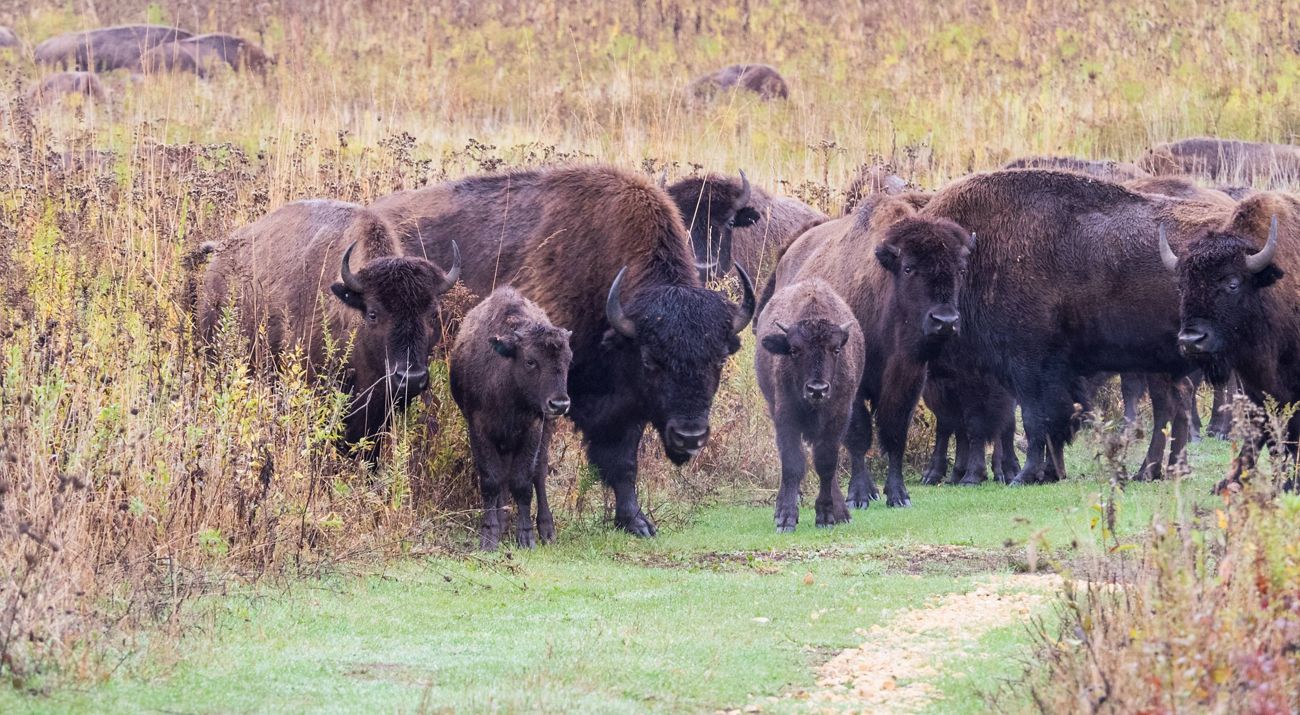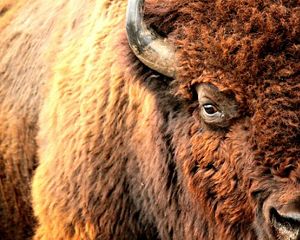
Nachusa Grasslands Bison FAQs
Do you have questions about Nachusa's bison herd? We've got answers!
Why did you bring bison back to Nachusa?
Re-establishing bison was the natural next step in the restoration process at Nachusa Grasslands. Their grazing behavior and the effects they have on the prairie with their hooves and horns naturally promotes biodiversity and help a wide range of wild flowers, plants, insects and amphibians to flourish.
How many bison are in the Nachusa herd?
Nachusa's herd is comprised of approximately 100 animals.
Where did the Nachusa bison come from?
The bison came from Wind Cave National Park in South Dakota and other TNC herds within the Wind Cave partnership. The Wind Cave herd is an important herd for the conservation of the species due to the herd’s unique and diverse genetics.
How are Nachusa’s bison different from other herds?
While there are other bison herds present in Illinois, they typically are on small farms and raised commercially, similar to cattle. The Nachusa herd was the first conservation herd in the state: their primary role is to help maintain the ecological health of the prairie at Nachusa.
Has TNC done introduced bison before?
TNC has more than 40 years of experience reintroducing and managing bison throughout the Great Plains of Iowa, Kansas, Missouri, North Dakota, South Dakota, Oklahoma, Colorado, and Nebraska.
How is the bison herd cared for?
Each fall, the bison are rounded up and moved through the state-of-the-art bison handling facility where a veterinarian evaluates their health and administers vaccinations to keep the herd healthy. This is also the time when some animals are sorted off from the herd to go to another ranch or preserve.
Will I be able to see the bison?
Stop by our Visitor Center and visit the overlook that provides a view of the prairie and the herd (depending on where they are grazing). You can also see the bison by bringing your binoculars to view them from one of the public roads. Please note: the bison roam across 1,500 acres of rolling landscape and may not be visible at times. No hiking is permitted inside the fenced bison unit. The other units of the preserve are open dawn to dusk for hiking.
When can I see calves?
Bison calves are typically born in April, May and June. Cows will find an area with good cover and give birth unaided. Their young are 50 pounds at birth, can keep up with the herd shortly after being born, and are weaned in about one year. If you visit Nachusa during this time period, you may be able to see calves traveling with the herd, but please remember: Unless accompanied by a trained volunteer or staff member, no one can enter the bison unit on foot or drive into the bison unit. We also ask that you stay 100 yards from the bison at all times, even when separated by a fence. Cows are extremely protective and will defend their calves if they feel threatened.
Can I still come to Nachusa?
Visitors are welcome and encouraged to visit Nachusa! The preserve is open from dawn until dusk. Our Visitor Center will help you enjoy your trip and learn more about the preserve. Please note: Hiking is not permitted in the bison unit.


